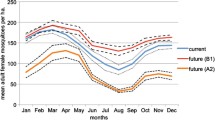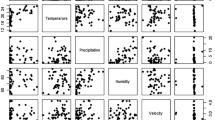Abstract
The mosquito Aedes aegypti is the main urban vector responsible for the transmission of dengue fever and dengue hemorrhagic fever. The city of Buenos Aires, Argentina, is located at the southern end of the world distribution of the species. The population abundance of Ae. aegypti is mainly regulated by environmental factors. We calculated the potential number of times that a female could lay eggs during its mean life expectancy, based on potential egg production and daily meteorological records. The model considers those variables implying physical hazard to the survival of Ae. aegypti, mosquito flying activity and oviposition. The results, obtained after calibration and validation of the model with field observations, show significant correlation (P<0.001) for different lags depending on the life stage. From these results, more favorable atmospheric conditions for Ae. aegypti reproduction (linked to the urban climatic change) can be observed. The climatic variability in the last decade resembles conditions at the end of 19th century.
Similar content being viewed by others
Author information
Authors and Affiliations
Additional information
Received: 3 March 1999 / Revised: 24 November 1999 / Accepted: 24 January 2000
Rights and permissions
About this article
Cite this article
de Garín, A., Bejarán, R., Carbajo, A. et al. Atmospheric control of Aedes aegypti populations in Buenos Aires (Argentina) and its variability. Int J Biometeorol 44, 148–156 (2000). https://doi.org/10.1007/s004840000051
Issue Date:
DOI: https://doi.org/10.1007/s004840000051




